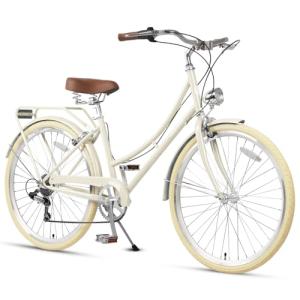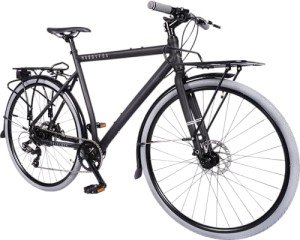Understanding The Importance Of Bicycle Hand Signals
Bicycle hand signals are more than just simple gestures; they are a fundamental aspect of safe and responsible cycling. These non-verbal cues serve a multitude of purposes that go beyond merely indicating turns or stops. Whether you're a seasoned cyclist or a beginner just starting out, understanding the importance of hand signals is crucial for ensuring your safety and the safety of others on the road.
Promoting Safe Cycling Practices: Hand signals act as a universal language for cyclists, allowing them to communicate their intentions to other road users. By signaling a turn, stop, or lane change, cyclists can create predictability and avoid surprising other drivers, pedestrians, or cyclists. This proactive approach significantly reduces the risk of accidents and collisions, making the roads safer for everyone.
Enhancing Communication On The Road: Effective communication is key to preventing misunderstandings and conflicts on the road. Hand signals provide a clear and concise way for cyclists to convey their actions to others, regardless of language barriers or other obstacles. This fosters a sense of mutual understanding and cooperation between road users, promoting a more harmonious and enjoyable cycling experience for all.
Preventing Accidents And Collisions: Statistics consistently show that a significant portion of bicycle accidents involve a lack of communication or miscommunication between cyclists and other road users. Hand signals help bridge this communication gap, allowing cyclists to clearly express their intentions and giving others ample time to react accordingly. By using hand signals consistently and correctly, cyclists can significantly reduce their risk of being involved in an accident.
Building A Respectful Cycling Community: The use of hand signals goes beyond mere safety considerations; it also contributes to building a positive and respectful cycling culture. When cyclists communicate effectively with each other and with other road users, it fosters a sense of camaraderie and shared responsibility. This, in turn, encourages more people to embrace cycling as a safe and enjoyable mode of transportation.
Legal Requirements And Guidelines: In many jurisdictions, the use of hand signals by cyclists is not only encouraged but also mandated by law. Familiarizing yourself with the specific hand signal regulations in your area is essential for ensuring compliance and avoiding potential fines or penalties. Moreover, adhering to these guidelines demonstrates a commitment to responsible cycling and contributes to the overall safety of the cycling community.
Essential Hand Signals Every Cyclist Should Know
Mastering a few basic hand signals can significantly enhance your safety and communication while cycling. These signals act as your voice on the road, conveying your intentions to other road users and ensuring a smooth and predictable flow of traffic. While there may be slight variations in hand signals depending on your location, the following are universally recognized and essential for every cyclist to know.
Turning Left: To signal a left turn, extend your left arm straight out to the side, parallel to the ground. This clear and unambiguous signal lets others know that you are intending to move to the left.
Turning Right: Signaling a right turn can be done in two ways. The first method involves extending your right arm straight out to the side, similar to the left turn signal. Alternatively, you can bend your left arm upwards at a 90-degree angle, forming an "L" shape with your arm and fingers pointing upwards. Both signals are widely recognized and indicate your intention to turn right.
Slowing Down Or Stopping: When you intend to slow down or come to a stop, extend your left arm downwards at a 90-degree angle with your palm open. This signal is similar to a stop sign and clearly communicates your deceleration to those behind you.
Hazard Or Obstacle: To alert others of a hazard or obstacle in the road, such as a pothole or debris, point downwards with either your left or right arm towards the obstruction. This signal warns others to proceed with caution and avoid the potential danger.
Pulling Over: If you need to pull over to the side of the road, extend your left arm upwards at a 45-degree angle. This signal indicates your intention to move out of the flow of traffic and come to a stop.
Advanced Hand Signals For Enhanced Communication
As you gain more experience on the road, expanding your repertoire of hand signals can further improve your communication with fellow cyclists and motorists. These advanced signals allow for more nuanced interactions and can be particularly useful in group rides or when dealing with complex traffic situations.
Signaling To Other Cyclists In A Group: Group rides require a higher level of coordination and communication among cyclists. In addition to the basic hand signals, there are specific signals used to communicate within a group. For example, pointing to the ground with your left or right hand can indicate a hazard on the respective side of the road, while waving your arm behind your back can signal the group to slow down.
Indicating Lane Changes: When changing lanes, it's important to signal your intention clearly to both cyclists and motorists. Extend the arm corresponding to the direction you intend to move, pointing towards the desired lane. This gives others ample warning and allows them to adjust their position accordingly.
Communicating With Motorists: While hand signals are primarily used to communicate with other cyclists, they can also be effective in conveying your intentions to motorists. In addition to hand signals, make eye contact with drivers whenever possible to ensure they have seen your signal. A quick nod or head movement can further reinforce your message.
Signaling While Riding In Low Visibility Conditions: When riding in low-light conditions or inclement weather, it's crucial to enhance your visibility. Use reflective gear and lights to make yourself more visible to others. Additionally, consider using exaggerated or slower hand signals to ensure they are clearly seen and understood.
Using Hand Signals In Off-Road Or Mountain Biking: Off-road cycling often presents unique challenges and requires adapting your hand signals to suit the terrain. For example, pointing towards a specific obstacle on the trail can alert others to its presence, while a raised fist can signal a stop for the group. Familiarize yourself with common off-road hand signals to ensure clear communication with fellow riders.
Regional Variations And International Standards
While the core hand signals remain consistent across most regions, it's important to acknowledge that there might be subtle variations in their interpretation or additional signals used in specific areas. As cycling gains popularity worldwide, understanding these regional differences becomes crucial for safe and effective communication on the road.
Recognizing Differences In Hand Signals Across Countries And Regions: Different countries and regions may have unique hand signals or variations in the way certain signals are interpreted. For example, in some European countries, extending the right arm horizontally might indicate a right turn, while in other regions, it might be interpreted as a signal for slowing down. It's essential to be aware of these differences, especially when cycling in unfamiliar areas.
Learning Common International Hand Signals: Despite regional variations, there are several hand signals that are widely recognized and understood across the globe. These include the basic signals for turning left, turning right, slowing down or stopping, indicating a hazard, and pulling over. Familiarizing yourself with these international standards ensures that you can communicate effectively with cyclists from different backgrounds.
Adapting To Local Customs And Practices: When cycling in a new region, it's always a good practice to observe and adapt to the local customs and practices regarding hand signals. If you're unsure about a specific signal, don't hesitate to ask a local cyclist or consult online resources for clarification. Respecting local norms not only promotes safety but also fosters a sense of cultural understanding.
Communicating Effectively With Cyclists From Different Backgrounds: Cycling is a global activity that brings together people from diverse cultures and backgrounds. By being aware of regional variations in hand signals and demonstrating a willingness to learn and adapt, you can communicate effectively with cyclists from all walks of life. This fosters a sense of inclusivity and promotes a positive cycling experience for everyone.
Staying Informed About Updates Or Changes In Hand Signal Regulations: As cycling infrastructure and regulations evolve, it's important to stay up-to-date with any changes or updates in hand signal requirements. Local cycling organizations, government websites, or cycling advocacy groups can provide valuable information on current regulations and best practices for using hand signals.
Tips For Effective Hand Signal Communication
Mastering the art of hand signals involves more than just knowing the correct gestures; it's about using them effectively to ensure clear communication and enhance your safety on the road. By following these tips, you can maximize the impact of your hand signals and create a safer cycling environment for yourself and others.
Timing And Placement: The timing and placement of your hand signals are crucial for their effectiveness. Signal early enough to give other road users ample time to react and adjust their course. Ideally, you should signal about 100 feet before your intended maneuver. Hold your arm out for a few seconds to ensure visibility, especially when turning or changing lanes.
Visibility And Clarity: Make sure your hand signals are easily visible to others. Avoid signaling in your blind spot or when your arm is obscured by your body or other objects. Extend your arm fully and use deliberate, clear movements to avoid any confusion. If riding in low-light conditions, consider using reflective gloves or arm bands to enhance visibility.
Combining Hand Signals With Other Communication Methods: While hand signals are essential, they can be even more effective when combined with other communication methods. Make eye contact with drivers and pedestrians whenever possible to ensure they have seen your signal. A quick nod or head movement can further reinforce your message and confirm understanding.
Adapting To Different Riding Conditions: Different riding conditions may require adjustments to your hand signaling technique. In heavy traffic, for example, you might need to signal earlier and hold your arm out longer to ensure visibility. In windy conditions, be mindful that your arm might be pushed around, so make your movements deliberate and steady. In low-light situations, consider using a flashlight or reflective tape to enhance visibility.
Practicing And Mastering Hand Signals: Like any skill, mastering hand signals takes practice. Start by practicing in a safe, low-traffic environment until you feel comfortable and confident with the movements. Once you're comfortable, incorporate hand signals into your regular rides. With consistent practice, using hand signals will become second nature, allowing you to communicate effectively and effortlessly while cycling.
Summary
Bicycle hand signals are crucial for cyclist safety and communication on the road. They promote safe practices, prevent accidents, and foster a respectful cycling community. Essential signals include turning left (extending left arm), turning right (extending right arm or bending left arm upward), slowing down/stopping (extending left arm down with open palm), indicating hazards (pointing downward), and pulling over (extending left arm up at 45 degrees). Advanced signals include communication within groups, indicating lane changes, communicating with motorists, and signaling in low visibility or off-road conditions. Awareness of regional variations and international standards in hand signals is important for effective communication with diverse cyclists. To use hand signals effectively, pay attention to timing, placement, visibility, and combination with other communication methods, and adapt to different riding conditions. Regular practice helps to master hand signals, ensuring clear communication and safer cycling experiences.







